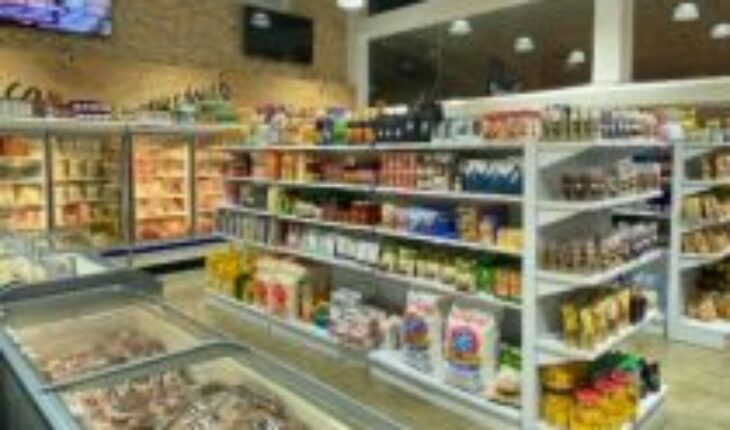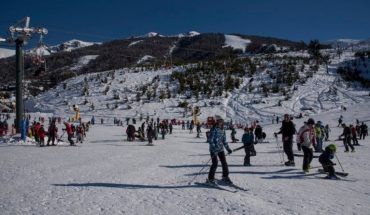They started out as small shops selling imported goods. They called them the “Nutella economy.” Then they expanded into large luxury supermarkets where you can find everything.
Prices are always set in dollars, although sometimes bolivars can be used for cheaper products. And about half of the workers in the still lifes earn their salary in bolivars.
When I have been there I found Norwegian salmon with the packaging written in Norwegian, that is, they are not products that were intended for export. They are imported directly from one business to another business. Norwegian salmon was four times more expensive than the price I pay in Norway.
Since when have still lifes existed?
The oldest still lifes were created about six years ago, but most have been created over the past three years.
Who are the customers and who are the owners?
Customers are mainly the elite who can afford to shop in still lifes. But we found that not all prices are so excessive, although they are obviously not within the reach of those who earn a salary in bolivars.
In that case, you could only buy a soda and a couple of chocolates with the monthly salary that people who work in the public sector receive. In the private sector, wages have risen a lot, but they are still around US$100 a month, which is equivalent to a quarter of the food basket for a family.
GETTY IMAGES.
About the owners, we can’t really answer that question from our surveys. In our study we were able to observe that most people have no experience, or very little experience, in the commercial food sector. That suggests that we are talking about a new group of entrepreneurs.
The stories that circulate and what we have perceived is that the owners are part of a new elite of people who are connected in one way or another with the government, but we cannot affirm it with scientific certainty.
What do these still lifes represent in relation to the economic model that exists in Venezuela?
On the one hand, they represent the deregulation of the economy. It’s an interesting study phenomenon. They also represent how this unplanned economic opening produces new inequalities.
You say that elitist capitalism of boofgto it is generating new inequalities. However, the government of Nicolás Maduro assures that the economy is on the right footing and that this benefits all Venezuelans. For example, the country recently overcame hyperinflation and the Gross Domestic Product has improved its performance...
The main reason for the economic growth is that the price of oil has risen and the fact that the government has found some ways to evade sanctions, increasing oil production.
The flow of remittances has also grown and the strong lockdowns due to the pandemic have been relaxed.
Although oil production has increased, it still remains well below what it generated before the decline. But it is true that it has improved.
I could not comment on the precise reasons as to why hyperinflation has declined, but openness to imports and the use of dollars has changed the situation, improving the provision of goods.
On the other hand, the government has launched a process of structural adjustment that is related to lower fiscal spending, economic openness, privatizations. The government has also limited the amount of bolivars circulating and tied the exchange rate to a highly overvalued rate. That has contained inflation.
And if these policies have improved the country’s economic situation, can’t it be said that they are somehow working?
If you measure success as long-term economic stabilization, better quality of life for most Venezuelans, poverty reduction, in that sense those policies are not working.
GETTY IMAGES.
You could probably say that they are working from the point of view of a short-term stabilization, but we cannot talk about a recovery because the economy is far from what it was in 2013.
Anyway I am not an economist to go into the detail of the economic discussion, my field of study is from Political Science.
In relation to this elitist still-life capitalism that you point out, are there similar experiences elsewhere in Am?Latin erica?
What could come closest, although it is not the same, are the businesses where you buy with dollars in Cuba, the “diplomercados” that are only accessible to a small elite and to foreigners.
Venezuela is moving towards the same trap that Cuba fell into in the sense of operating with parallel currencies that work in the same economy.
Cuba has tried to find ways out of that system, but it is very difficult when it has already been established.
Are there similar examples in Nicaragua?
It is very different in Nicaragua. On the one hand, the relationship between the Nicaraguan government and the local private sector has been very different from the relationship that has been established in Venezuela.
Daniel Ortega has had a very close relationship with the local elite. I would say that the Nicaraguan government has always been socialist in discourse, but capitalist in practice.
On the other hand, in Venezuela there was at some point a more socialist government at one point, but then things changed.





